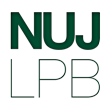The European Federation of Journalists has issued advice to members on how to protect and enforce moral rights on their work. The EFJ says:
The widespread misuse of press photographers’ images – especially on the internet — is a matter of growing concern for the European Federation of Journalists (EFJ). The misuse of images, such as copying, selling or manipulating photographs without permission and without crediting the author has led to various ethical problems and threatened press photographers’ moral rights.
The EFJ urges member unions:
- To stress the values of press photographers’ moral rights and
- To provide their members with advice on how to protect these.
Moral Rights & Press Photographers
Like all authors, press photographers should enjoy the full rights to their work, including both economic and moral rights. While economic rights can be assigned through fair contractual agreement, moral rights of press photographers are unwaivable and must remain with the author.
The key moral rights are:
- The right to be credited as the author
- The right to protect the integrity of a work and oppose any distortion.
International & National Law
Moral rights are defined in international treaties and national laws. Article 6bis of the Berne Convention for the Protection of Literary and Artistic Works stipulates that:
…the author shall have the right to claim authorship of the work and to object to any distortion, mutilation or other modification of, or other derogatory action in relation to, the said work, which would be prejudicial to his honour or reputation.
Moral rights are also guaranteed in national laws. The national legal frameworks in most European countries recognise press photographers’ unwaivable moral rights – as these are rights of every individual citizen. The exceptions are the UK, Ireland and the Netherlands where moral rights can be waived – and publishers therefore frequently demand this.
Protecting Moral Rights Through Collective Bargaining
Although international and national laws recognise press photographers’ moral rights, it is not always easy to enforce these rights. Employers or commissioning parties often impose unfair contracts on press photographers asking them to transfer whatever rights the country’s law permit (and sometimes rights that cannot legally be transferred). Protecting these rights through the courts is an expensive and slow process with no certainty of a favourable outcome.
New technologies also make it much easier to alter photographs. There is a danger that this may be done in a way that damages the photographer’s reputation. It is therefore a good idea to insert a provision restating moral right protection in collective agreements.
How Can Unions Help Press Photographers Protect their Moral Rights?
- Advise members against signing unfair contracts containing provisions that weaken (or in the UK and Ireland remove) their moral rights.
- Help photographers organise to collectively reject such contracts from particular publishers or broadcasters.
- Negotiate collective agreements containing specific authors’ rights provisions to protect their moral rights: see the sample of the EFJ’s Authors’ Rights Provision (Word .doc) for Collective Agreement for Journalists/Press Photographers.
- Adopt guidelines with media companies on processing of images that ensure that metadata are preserved throughout the editorial and archiving process.
- Adopt guidelines with media companies that forbid manipulation of images, except for normal colour correction etc and specify clear labeling of illustrations based on altered photographs (e.g. “Illustration by Eva Mueller based on a photograph by Eve Miller”).
Protecting Press Photographers’ Moral Rights Online
The growing online market poses challenges to the protection of moral rights on the Internet. The web has made unprotected images susceptible to theft and misuse. Images can easily be downloaded, used and manipulated by both private and commercial users anonymously and without either seeking a licence or offering payment.
A study in 2007 (PDF) suggested that 1 in 17 professional photographs online was either stolen or misused (e.g. copying or manipulating photographs without permission or compensation, or giving credit to the author). In Europe, the situation is worse: in Germany with nearly a quarter (23%) of professional photographs were stolen or misused, and in the UK 1 in 8 (13%).
Other ways press photographers can protect their moral rights online
There is no known technology for preventing abuse of images once they are posted online. But various technologies can help find improper uses so that photographers – and their unions – can take actions.
- Watermarking is digitally embedding a signature or identification that can prove the ownership of the image once it is stolen or misused. The watermark can be invisible: a photographer uses a computer program to embed an identifying code which is buried in the image data itself.
However, photographers are divided on this technology. Heavy processing of the image, or making a small thumbnail, may make the code unreadable. Watermarking may never be more than an aid to identifying some images. - Metadata is a developing and increasingly popular technology that can store electronic right-management information (e.g. essential copyright, contact and licensing related information) to identify and track digital images. The information can be read by computers – or, in future, by specialised search engines that track uses of pictures.
The removal or alteration of any electronic right-manangement information of the copyrighted material would normally infringe the copyright of rightholders. This provision is protected by the European legislation (Article 7, PDF) applicable in principle to all EU Member States. - Entering data via your camera – some cameras allow users to enter basic metadata such as name and contact details into the camera, so that this information will be stored inside every image file alongside the image data. The problem is to ensure that this information stays in the image file when the picture is processed, archived and posted online. Codes of practice collectively agreed with publishers are one way to define good practice on picture desks.
- Image search engines – commercial services are currently in development that will allow photographers to upload a small copy of an image and search the web for copies of it. There is a few existing image search portals (the EFJ has a list of these portals available on request) that allow photograhers to detect and monitor the use of their copyrighted images on the internet.
Projects that aim to develop standards that define how metadata is presented include the PLUS Coalition and the more publisher-oriented IPTC (International Press Telecommunications Council).
The EFJ is working toward getting metadata legally protected in every European country, as EU law says it should be.
Should you have further enquiries, please feel free to contact: Yuk Lan Wong – [email protected] or Pamela Morinière – [email protected]
Best regards, IFJ/EFJ Authors’ Rights Expert Group
You can also download this document as a PDF.




Unfortunately we in the UK were screwed in the Copyright, Designs and Patents Act 1988.
Firstly because we have to assert our moral rights by a suitable statement rather than them being automatic (like copyright.) For most usages of our images this is impossible, although one reason for putting most of my images on the web was to do so – but then I forgot!
Secondly because Section 79 (6) on the right to be credited says:
(6) The right does not apply in relation to the publication in—
(a) a newspaper, magazine or similar periodical, or
(b) an encyclopaedia, dictionary, yearbook or other collective work of reference,
of a literary, dramatic, musical or artistic work made for the purposes of such publication or made available with the consent of the author for the purposes of such publication.
and 81(4) is a similar clause about derogatory treatment.
So basically until we get a change of UK law we are stuffed here.
Which is why this one of the things we should be pressing for in the discussion about orphan works.